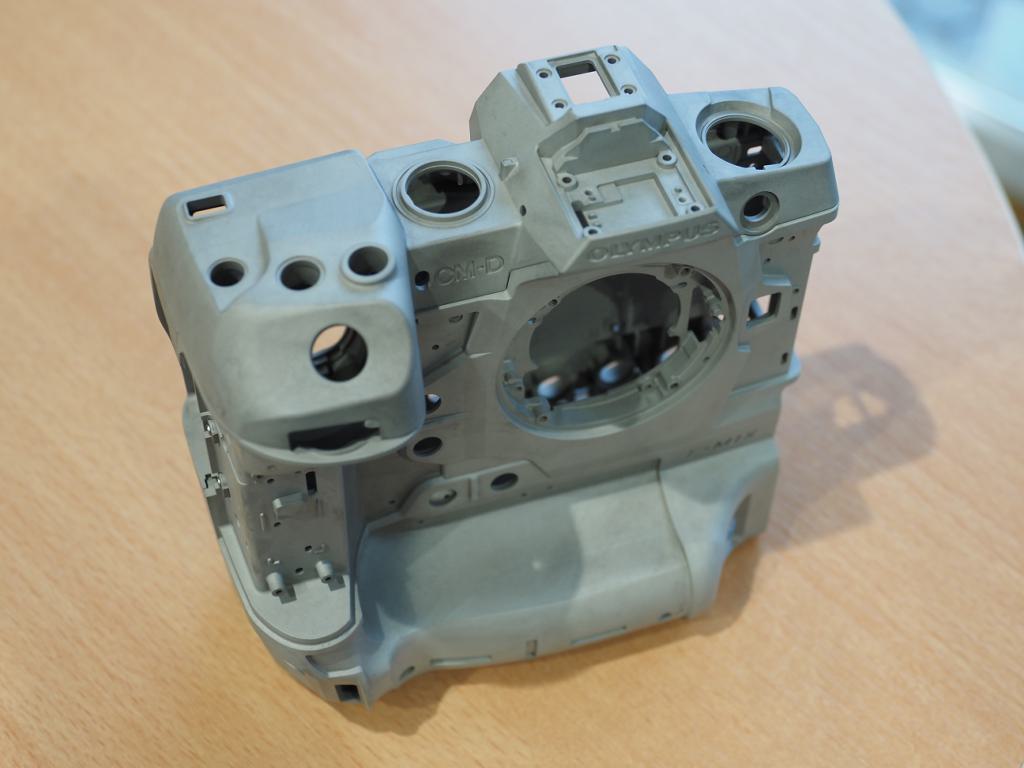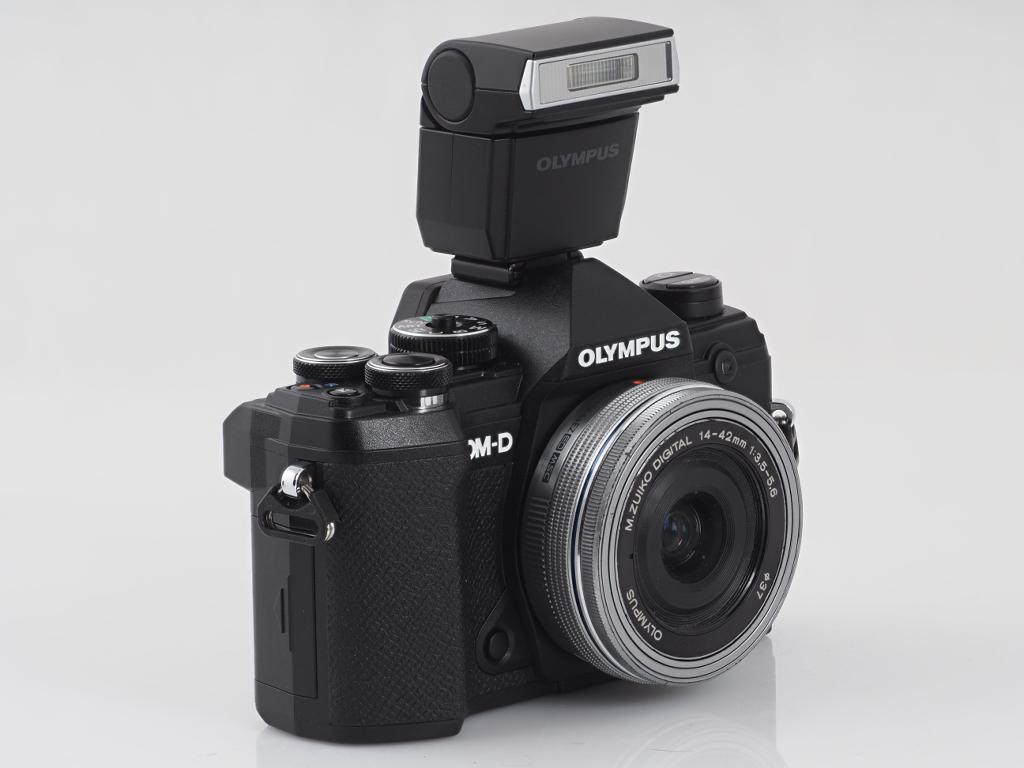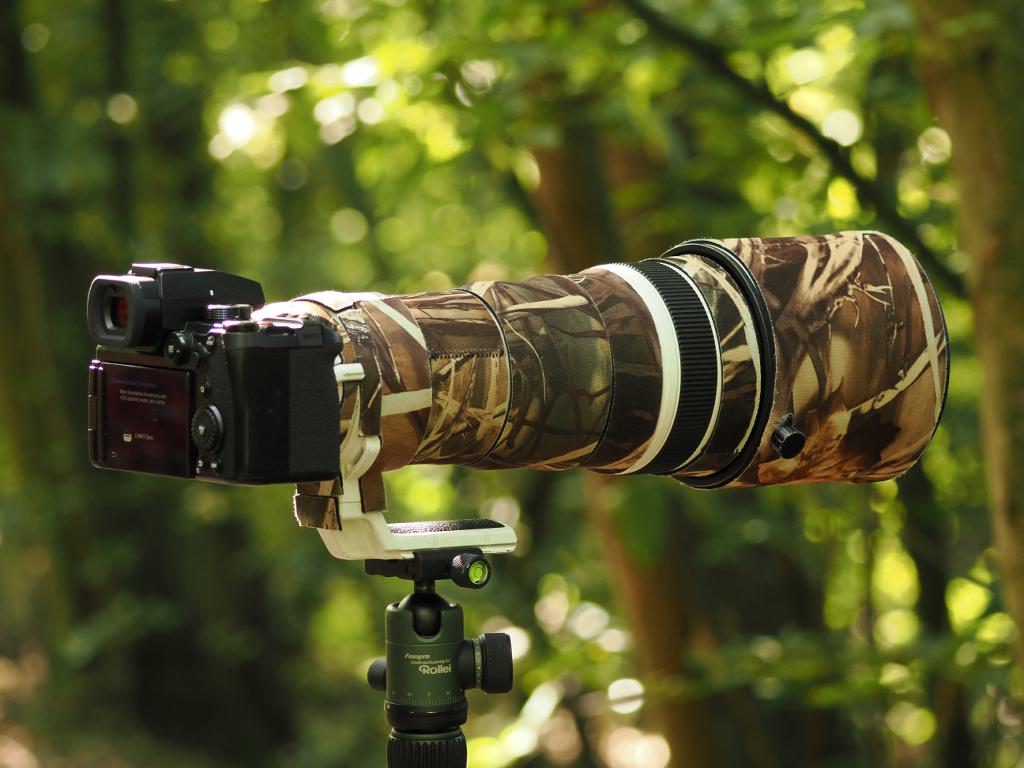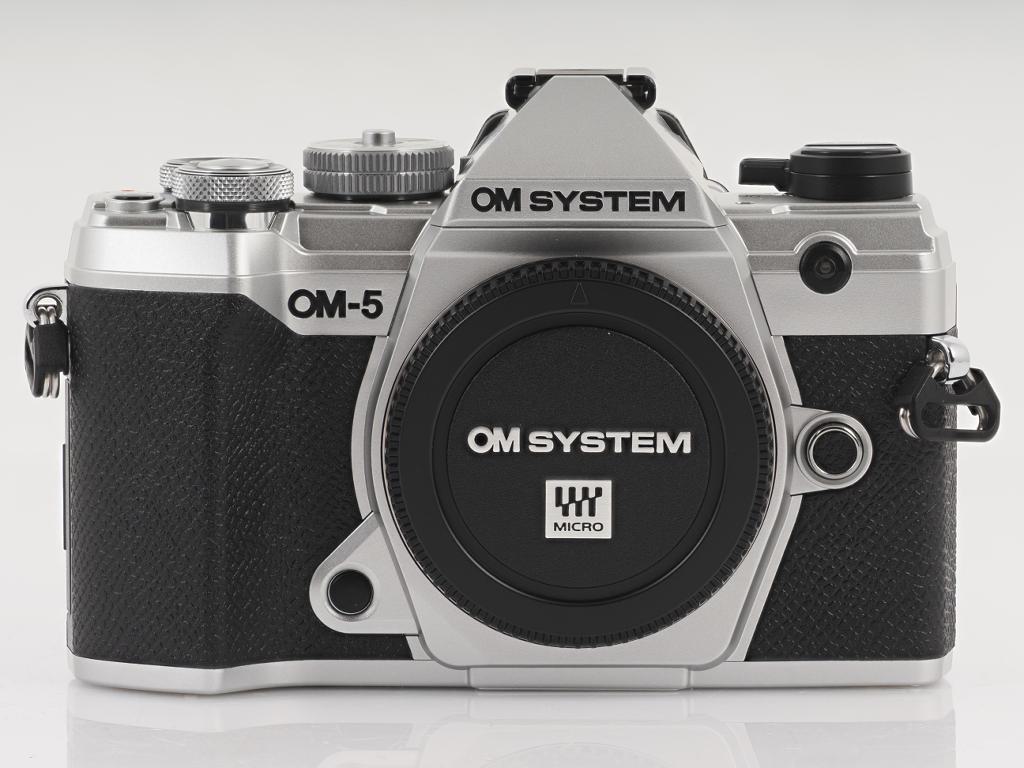
2019 was the long-awaited anniversary year that all Olympus sales staff were looking forward to. “Yes, nothing is coming in 2018, all the bangers are saved for 2019. “
The E-M1X arrived at the beginning of 2019. A “technology carrier” that contained a second image processor that did nothing other than recognise subjects. Otherwise, it contained the electronics of the E-M1II, an attached battery grip with two batteries and a viewfinder that was simply fitted with a different lens to make the viewfinder appear larger. The camera was expensive and the targeted number of units were never sold. In fact, the camera was only built at all because absurd quantities of battery grips were delivered when the E-M1 was launched in Germany and people in Japan thought that they had been sold and that there was therefore a crazy market for large mFT cameras in Germany. It turned out afterwards that the battery grip had been “sold” as a promotional gift.
The 12-200 was also released in 2019, a travel zoom that had unreliable AF at the long end and received bad press for this reason and now hardly appears anywhere.

The E-M5III, a slimmed-down E-M1II with a too-small battery as an “anniversary camera” and the E-PL10, a “firmware update” for the E-PL9, were also not really innovative developments. In total, three cameras were launched on the market in the anniversary year – all with more or less recycled inner workings, but still – three cameras. And one lens.
Rumours were already circulating in November 2019 that Olympus would be shutting down its camera business within ten months. I dutifully denied it here – also because I got denials from Japan. The rumours were pretty accurate. Olympus Imaging was actually spun off in autumn 2020.
In February 2020, however, the next E-M1II clone was launched, the E-M1III, which was actually nothing more than a firmware update for the E-M1II and a new kit lens, the 12-45, which was initially really bad due to series dispersion and only became reliable over time. However, as a low-light kit lens, it was still far too expensive.
Then came Corona. And in May, the news that Olympus was discontinuing its imaging sales in South Korea. In the written announcement, Olympus lied to its customers that there were “no efforts” to sell the imaging division. Then, in June, the bombshell was dropped that they were planning to sell Imaging to JIP.
Despite the unrest surrounding the sale, another camera arrived: the E-M10IV. A camera that will still be sold in 2024. Simply because no other entry-level camera has been developed yet. The camera has the sensor of the PEN-F and the features of the E-PL-10, plus viewfinder, flip-up display and UHS-II slot, but no support for FT lenses. Here again. Residual ramp without innovation. The 100-400 presented at the same time is also nothing more than a pimped Sigma lens. Minimal effort.
In 2021, the successor to Olympus Imaging, OMDS, stumbled into the business. Olympus Maitani Digital Solutions. A company that is essentially not a camera company at all, but instead employs two thirds of its workforce with things that are not allowed to be talked about. Website, service, press department. Nothing worked. The only thing that worked were announcements. There are rumours of a “wow” camera coming.

But what finally arrives is the “white goddess”, the 150-400, which was announced back in the Olympus days. At least the lens is presented, the influencers cheer and very few people actually get the lens – delivery problems because production cannot be ramped up. Too much manual labour, which is also carried out by Olympus employees.
A camera follows: the E-P7. An E-M10IV without a viewfinder, but with a slimmed-down Creative Dial. Recycling again.
Another lens: the 8-25, which was taken off the market after a short time due to alleged delivery problems and then re-released after a clandestine revision. It has been usable ever since,
And that was the end of the first year of OMDS. An excellent lens that is not available, a camera with technology from the day before yesterday and an overpriced wide-angle zoom with quality problems. Not a good start.
The year 2022 got off to a much better start: the 20mm f/1.4 is a solid, fast lens. Then came the OM-1 – not really “wow”, more like “woof”, but at least with new technology, a new sensor, a new menu and the best FT-AF to date. Unfortunately, you had to wait until firmware 1.2 for the autofocus to be practical at all.
Then in autumn came the 40-150 f/4, another very expensive, low-light lens that “occasionally” had edge blur at the long end at f/4 and suffers from brutal serial dispersion – but is almost parfocal.

And there was even a new camera in 2022: the OM-5, another recycled camera. Put an E-M1II in the body of an E-M5III, neuter it and stick an ambitious price tag on it. That’s it. After all, it is the only camera that can film endlessly AND has the zoom frame.
Then came 2023 – the 90 macro and the TG-7, the latter also a recycled predecessor camera.
Accordingly, the market share of OMSystem /OMDS in the camera market is in decline. The dealer network shrank at breathtaking speed, problems with service, shop, website and products meant that new customer business plummeted. What’s more, the marketing department came up with the brilliant idea of focussing on the highly competitive market of wildlife photographers. When competitor Panasonic launched the G9II in autumn 2023, OMDS was overwhelmed. They had relied on paid influencers who switched to the competition with flying colours and were now promoting their products.
Sie schreiben „ Noch ein Objektiv: das 8-25. Das wurde nach kurzer Zeit wegen angeblicher Lieferschwierigkeiten vom Markt genommen und dann nach klammheimlicher Überarbeitung wieder rausgebracht. Seitdem ist es brauchbar,“
Haben Sie mir da nähere Informationen, was genau überarbeitet wurde und ob dies Auswirkungen die optische Qualität hatte? Ein Link tut es natürlich auch.
Ich habe wohl ein relativ frühes Exemplar mit dem ich nicht wirklich warm werde. Das Gegenlichtverhalten empfinde ich, mit den Lens flares, sagen wir „sehr speziell“
Vielen Dank und schöne Ostertage!
Nach meinen Informationen war ein Plastikteil innen drin zu weich. Das hat bei dem heißen Sommer nachgegeben und damit war das Objektiv unscharf.
Ab wann genau oder ab welcher Ser.-Nr wurde das Objektiv in der besseren Variante verkauft?
Hallo Reinhard, danke für diese (schonungslose) Aufarbeitung der letzten Jahre.
Mir ist beim lesen gerade der Kaffee im Hals stecken geblieben… Es entfuhr mir spontan ein „Wow!“
Wenn man wie hier mal das grosse Gesamtbild der letzten 3-4 Jahre auf einen Blick sieht, kommt man schon echt ins Grübeln.
Ergänzen möchte ich noch, dass die OM-5 zwar endlos filmen kann, Zoomrahmen besitzt und einen Mikrofonanschluss hat, aber keinen Kopfhöreranschluss um den Ton zu kontrollieren. Und ob die Bodenplatte gegenüber der EM5 III verstärkt ist, wurde auch nie offiziell bestätigt.
Der grösste Online-Händler der Schweizer hat kürzlich seine Verkaufszahlen von Kameras der letzten 10 Jahre veröffentlicht:
https://www.digitec.ch/de/page/so-hat-sich-der-kameramarkt-in-den-letzten-zehn-jahren-entwickelt-32088
Das ist jetzt nicht vollkommen repräsentativ, da der Fachhandel sicherlich eine etwas andere Verteilung hat, aber nach etwas Wachstum ist Olympus mittlerweile nicht mehr so weit weg von Ricoh…
Ricoh hat in Deutschland das komplette Marketing gefeuert und schreibt seitdem schwarze Zahlen….
Da fragt man sich unwillkürlich: können sie nicht, oder wollen sie nicht? Hätten sie noch Leute, die könnten?
Mit der E-M1 III kam der Multiselector (Joystick) auf vielfachen Wunsch derer, welche das Ding bei der Konkurrenz gut fanden. Blöderweise sah man keine Notwendigkeit den Griff zu überarbeiten. Sich an den Stick gewöhnen und beim Portraitformat ins Leere fassen?
Ich wollte unbedingt beide Belichtungsparameter auch im Videomodus haben – E-M1 II und PEN-F ließen diese aber vermissen – und so landete ich dann bei den beiden Xen.
Schade, dass die E-M1 II nicht die Firmware der E-M1 III bekommen hat. Für mich war sie von der Bedienbarkeit die durchdachteste der klassischen 1er-Linie.
Und beim Griff der OM-1 für 350 € haben sie den Joystick dann drangemacht – dafür aber das komplette Steuerkreuz weggelassen. Welches von jenem natürlich genausowenig ersetzt werden kann wie andersrum. Man denkt, sie finden da immer wieder genau die Kleinigkeiten zum Falschmachen, die in der Praxis zuverlässig zu einem erheblichen Ärgernis werden.
Für den Preis hätte ich eher einen GPS-Empfänger erwartet.
Der Artikel passt zur Stimmung eines Karfreitags. Ich gebe die Hoffnung an die Auferstehung der Marke noch nicht auf. Allerdings ertappe ich mich schon gelegentlich beim aufmerksamen Lesen von Spezifikationen und Tests von Wettbewerbsprodukten.
Hallo Reinhard,
stimmst Du uns so langsam auf das Ende von OMDS ein ?
OMDs wird nicht zumachen. Da mache ich mir keine Sorgen.
Kam nicht das 4/12-100 mm auch in diesem Zeitraum heraus? Hast du das vergessen Reinhard. Das ist m.E. doch recht brauchbar.
Das 12-100 ist mit der EM-1II auf den Markt gekommen. Das ist ne Zeit her….
Ok. Hätte ich jetzt nicht gedacht, dass es schon so lange her ist.
“Tatsächlich wurde die Kamera überhaupt nur gebaut, weil bei der
Einführung der E-M1 in Deutschland absurde Mengen an Batteriegriffen
abgesetzt wurden und man in Japan dachte, die wären verkauft worden
und in Deutschland gäbe es demzufolge einen irren Markt für große
mFT-Kameras. Hinterher stellte sich raus, dass der Batteriegriff
als Werbegeschenk über den Ladentisch ging.”
Diese Info ist für mich nicht neu (gab es ja schon beim FolyFos),
aber mich wundert es, dass auch ein Weltkonzern im 21. Jahrhundert
so unprofessionell arbeiten kann. Weiß die Zentrale in Japan denn
nicht, ob die Ware (E-M1-Batteriegriffe) verkauft oder kostenlos
zur Kamera mitgegeben wurde?
Und unabhängig von der Tatsache, ob die Batteriegriffe verschenkt
oder verkauft wurden: Heißt das etwa, dass die Existenz der E-M1X
ausschließlich auf der Grundlage des deutschen Marktes basiert?
Diese Story ist echt ein Trauerspiel – insbesondere dann, wenn man sich ansieht, wie die anderen Hersteller angesichts dramatisch eingebrochener Absatzzahlen im Kameramarkt haufenweise neue Sachen rausgehauen haben.
Wenn OMDS nicht eine so unglaublich treue Fanbase hätte, wären sie längst weg vom Fenster. Denn dass sie noch nennenswert Neukunden anziehen, kann ich mir beim besten Willen nicht vorstellen.